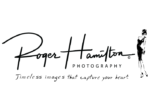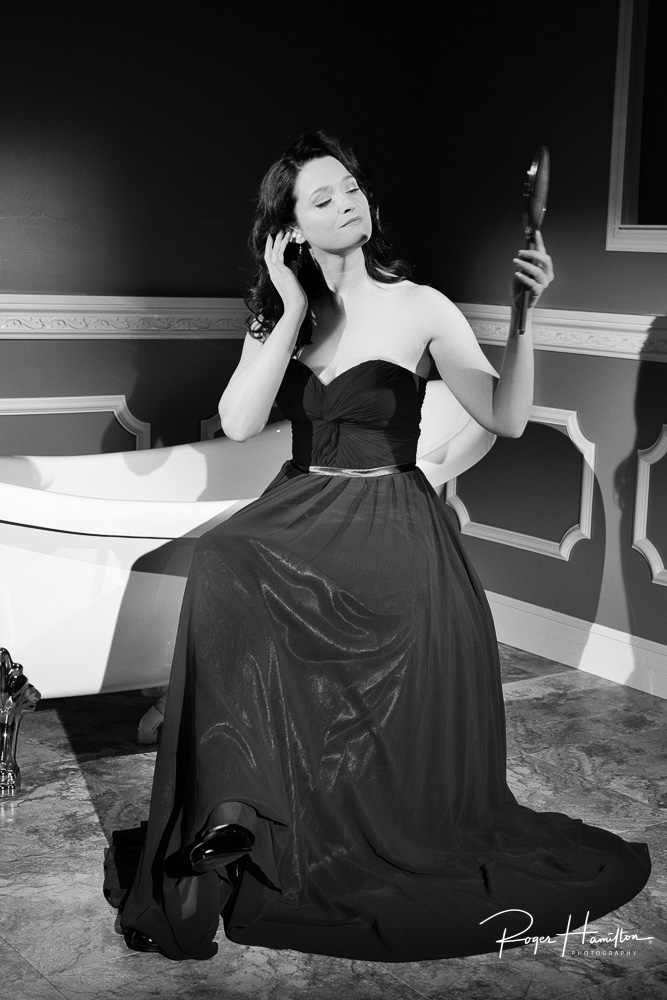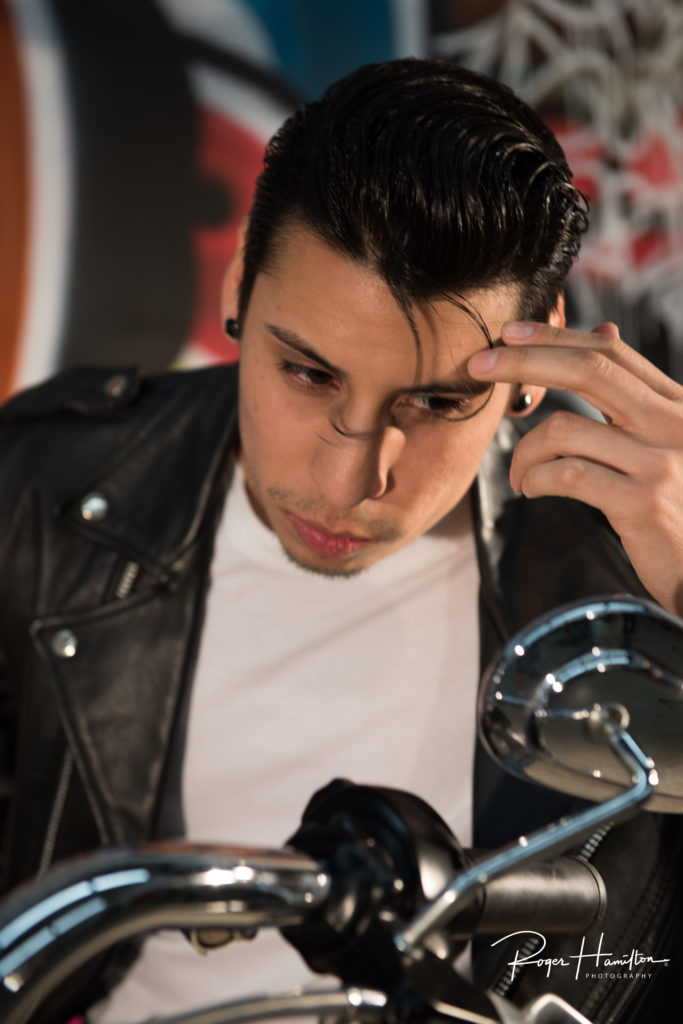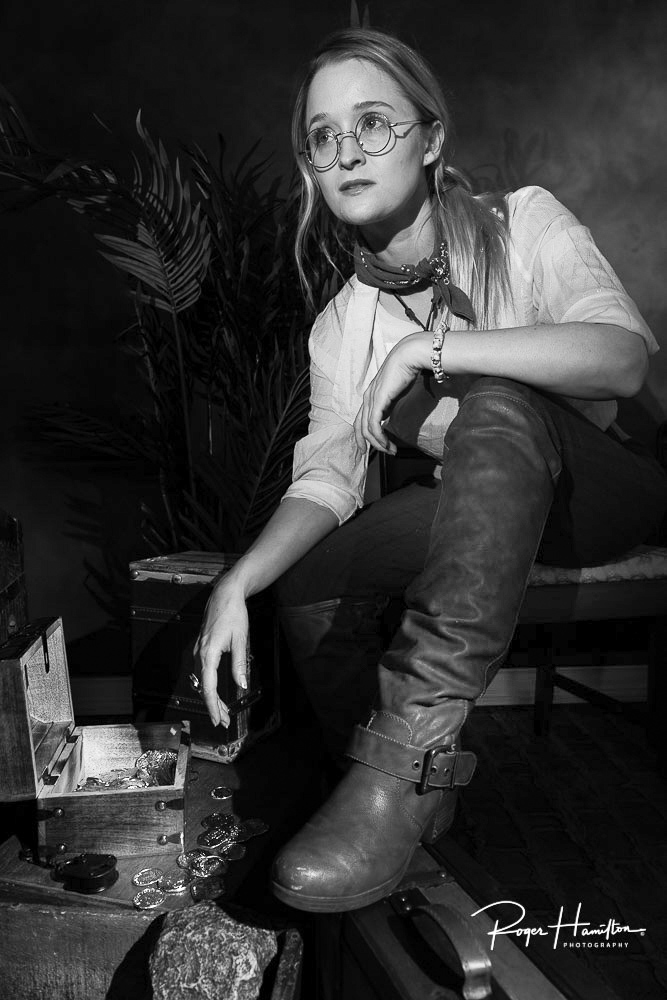Shooting a 1940’s Hollywood project is actually a lot of fun. From the lighting to the props, it’s a fun trip back in time.
I enjoy studying up on the period from multiple sources. The hardest subject I’ve found is the makeup and hair. The styling and background are a different challenge, too. The 1940’s was split between two periods: WWII and post-WWII. After the war, the styling changed to include a number of new materials and colors. During the war, styling was of fewer colors and less material.
To shoot a 1940’s scene, I find that it is best to use lighting of the day to give the same glow of the period. I suppose strobes could be used, but I use ARRI tungsten fresnels. I love working with these lights but they are HOT lights. Makeup has to be done right to use these lights. Otherwise the makeup will run and the photos ruined.
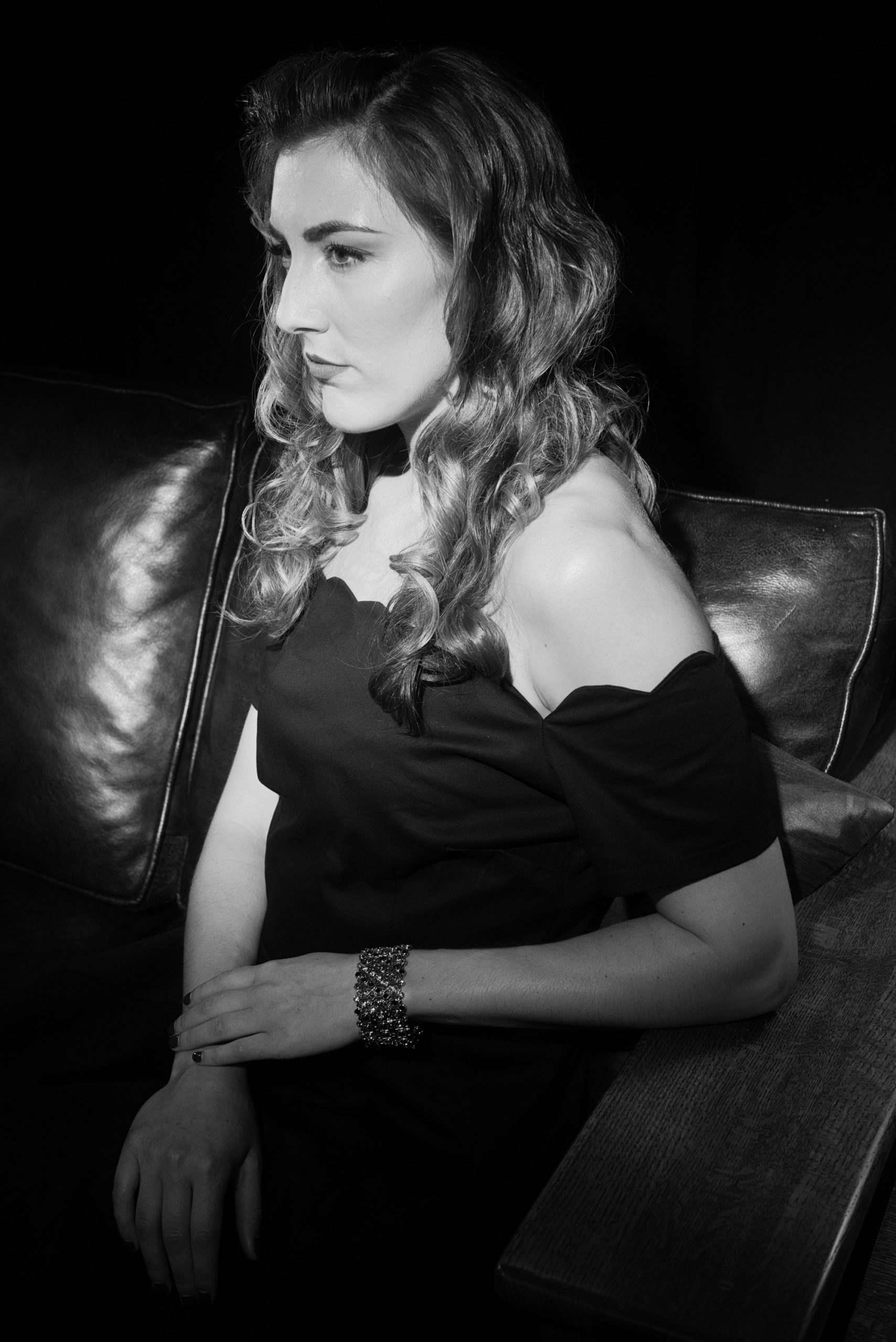
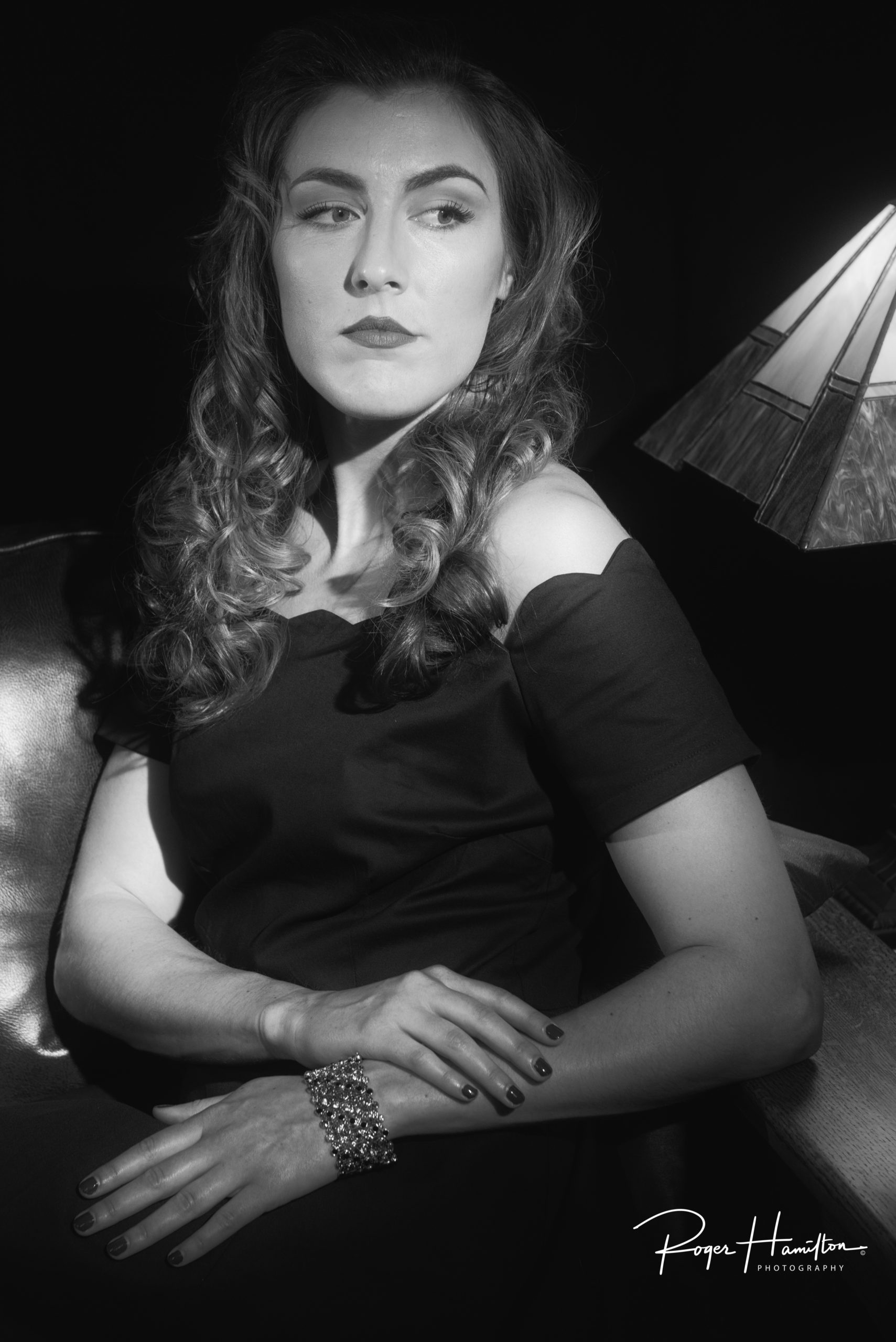
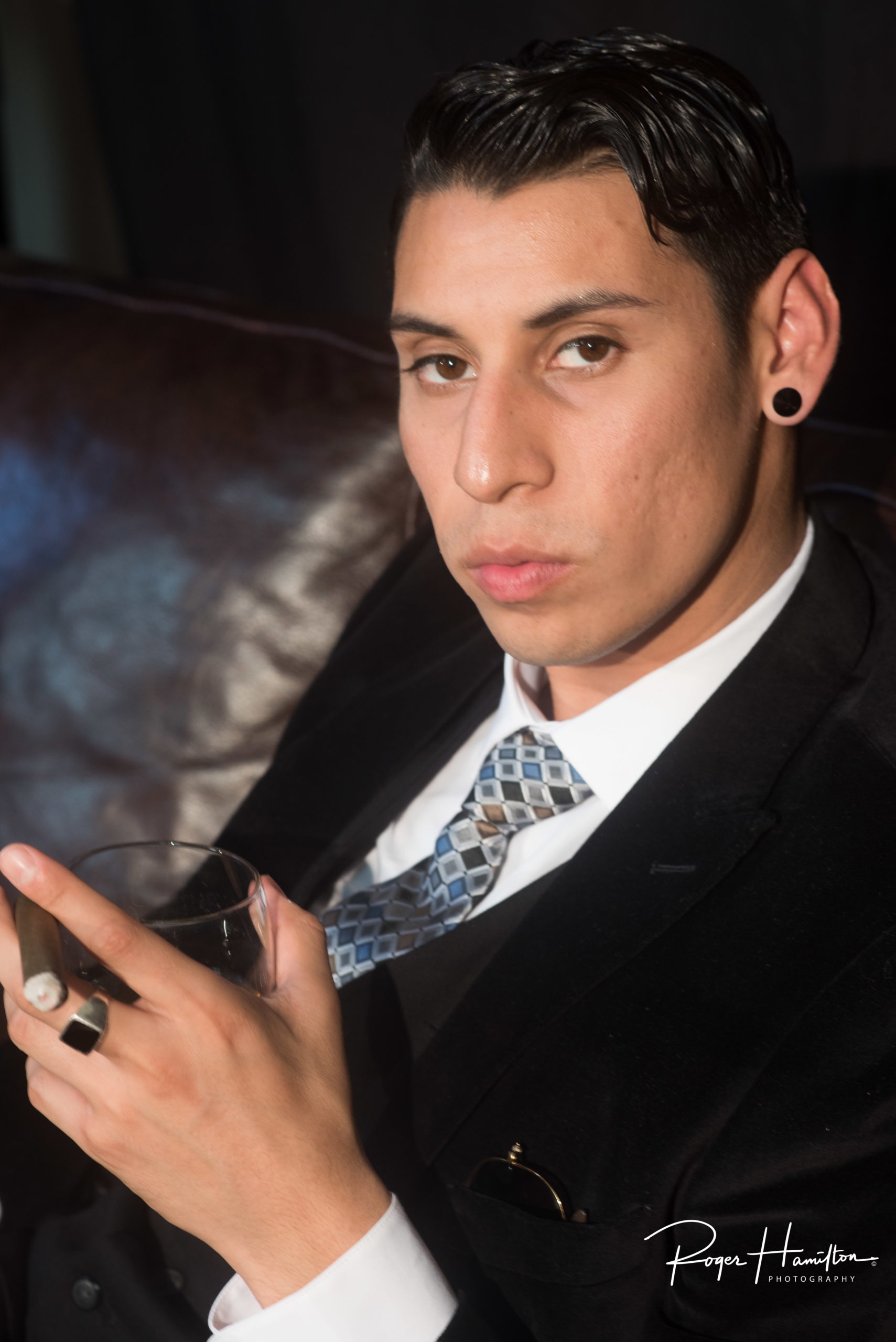
For props, I use a cigarette tray, artificial cigarettes or cigars and an old telephone. I’ve also acquired things such as book ends, doilies, books and other items. I’ve found that using too many props is distracting for images of this time period. Just don’t over-do it or under-do it. I strive in all my period photos to make them realistic, believable and authentic 1940’s.
For backgrounds, you can use a black photographic background with some folds in it to add depth and visual interest. Here again, though, don’t overdo it either. There are also a number of 1940’s wallpapers that can also be used. I’ve not hung the wallpapers or paper background before but check with Savage Universal as a source of great background papers and ideas.
I’ve also taken the advice of other pros and used a black mist filter on my black and white images. There are, of course, lens choices. I prefer to use a 24-70mm for full-length shots and a 85mm portrait lens for the half-body shots.
Though a 1940’s project can seem daunting, it doesn’t have to be. As I have outlined above, the process can be broken down into manageable steps that will lead to success in your shoots.
